Siena Cathedral: a masterpiece of Gothic architecture and its wonders
It is the main building of worship in Siena: its profile, recognizable even from afar, dominates the city from above and is, along with the Torre del Mangia, the main landmark of the Tuscan city’s skyline .We speak of Siena Cathedral, which, according to tradition, was originally built to replace a church dedicated to Mary, erected around the 9th century on a votive temple for the worship of Minerva, and was consecrated on November 18, 1179, by Pope Alexander III Bandinelli, a native of Siena. The work, however, did not end: in fact, from 1247 to 1268 the presence of the architect and sculptor Nicola Pisano is recorded as master builder of the site, followed later by his son Giovanni who worked on the facade from 1284 to 1298, later completed by the architect Camaino di Crescentino. Due to the economically prosperous time for the city, an enlargement of the cathedral was planned in 1339, whereby the pre-existing building would become the transept of the new cathedral (the “Duomo Nuovo”), while the new facade would coincide with the baptistery, built in 1316. The plague struck the city in 1348, slowing down the work, traces of which can still be seen in the so-called "facade," which finally ceased in June 1357. In addition to the body of the building, the cathedral complex consists of the Romanesque-style bell tower, erected on the ruins of the pre-existing Bisdomini tower, and which was completed in 1313.
The façade of the cathedral, made of white marble and Prato serpentine, reflects the internal articulation divided into three naves, with three portals framed in round arches, surmounted by as many pediments where seventeenth-century busts are placed in the center, and on the top of which statues depicting Angels and on the central pediment a statue of the Virgin. The lower part of the facade was made by Giovanni Pisano, to whom are due the fourteen statues of Prophets, Patriarchs, Sibyls and Philosophers, which surmount columns, surrounding the entire perimeter of the cathedral. The sculptures, now housed in the Museo dell’Opera del Duomo, are carved in the round with extreme vividness, and with a varied array of gestures they advance toward the viewer clutching a scroll in their hand. Paying attention to the viewer’s vision, Giovanni made the statues with the heads projected forward from the body, so that the protrusion of the lower parts would not prevent an optimal view.
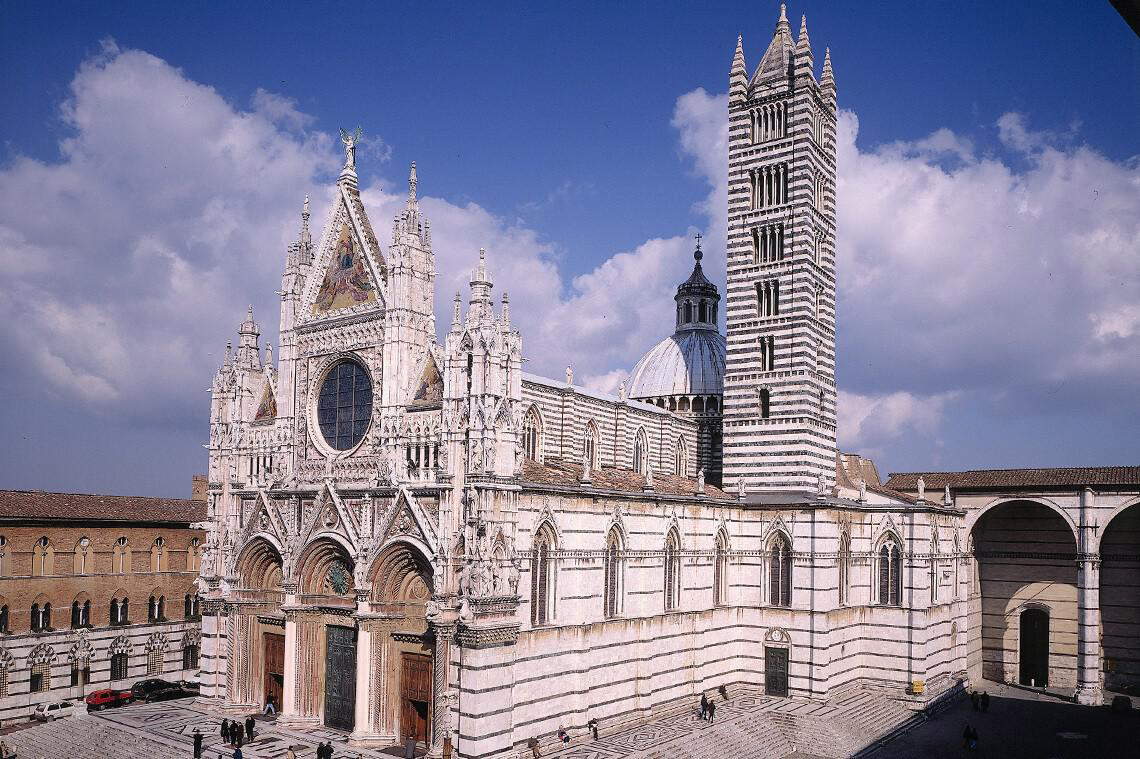

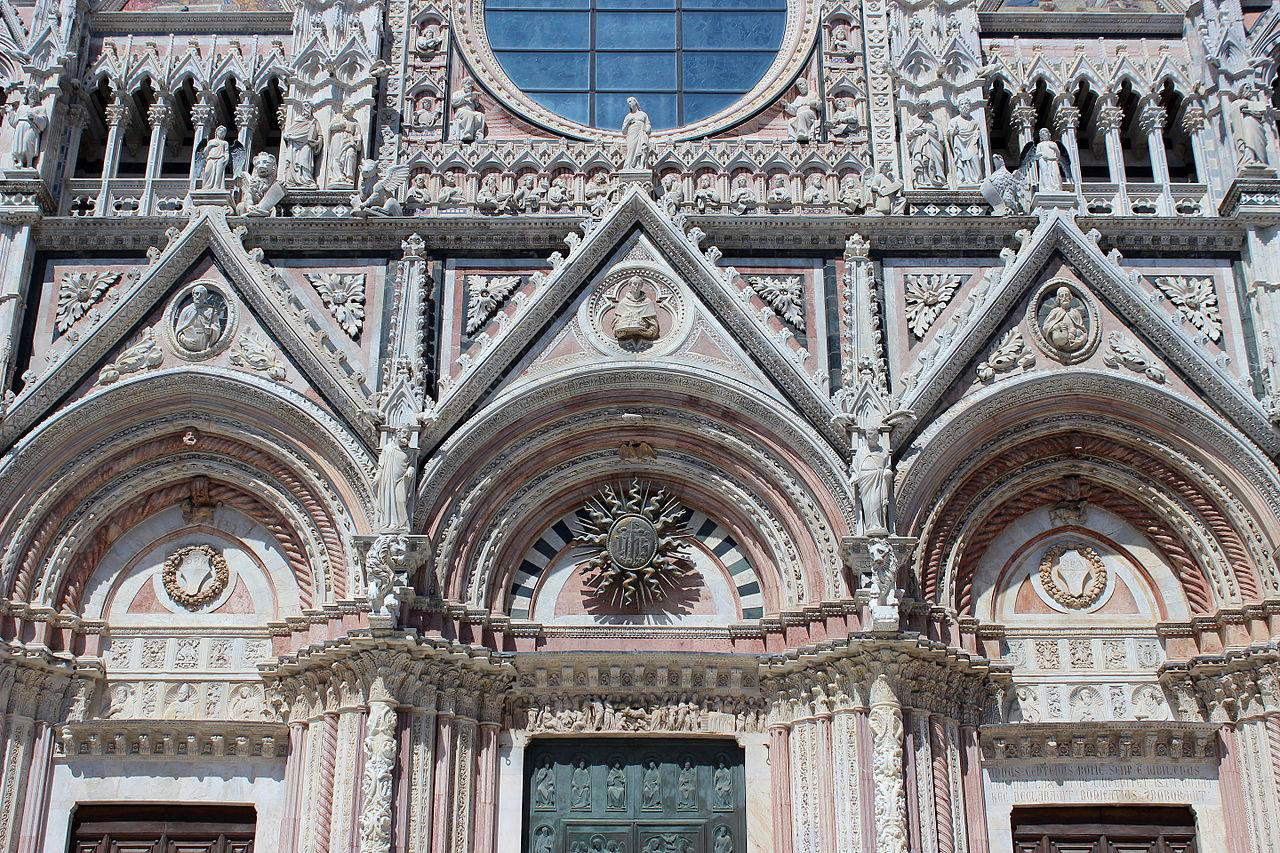
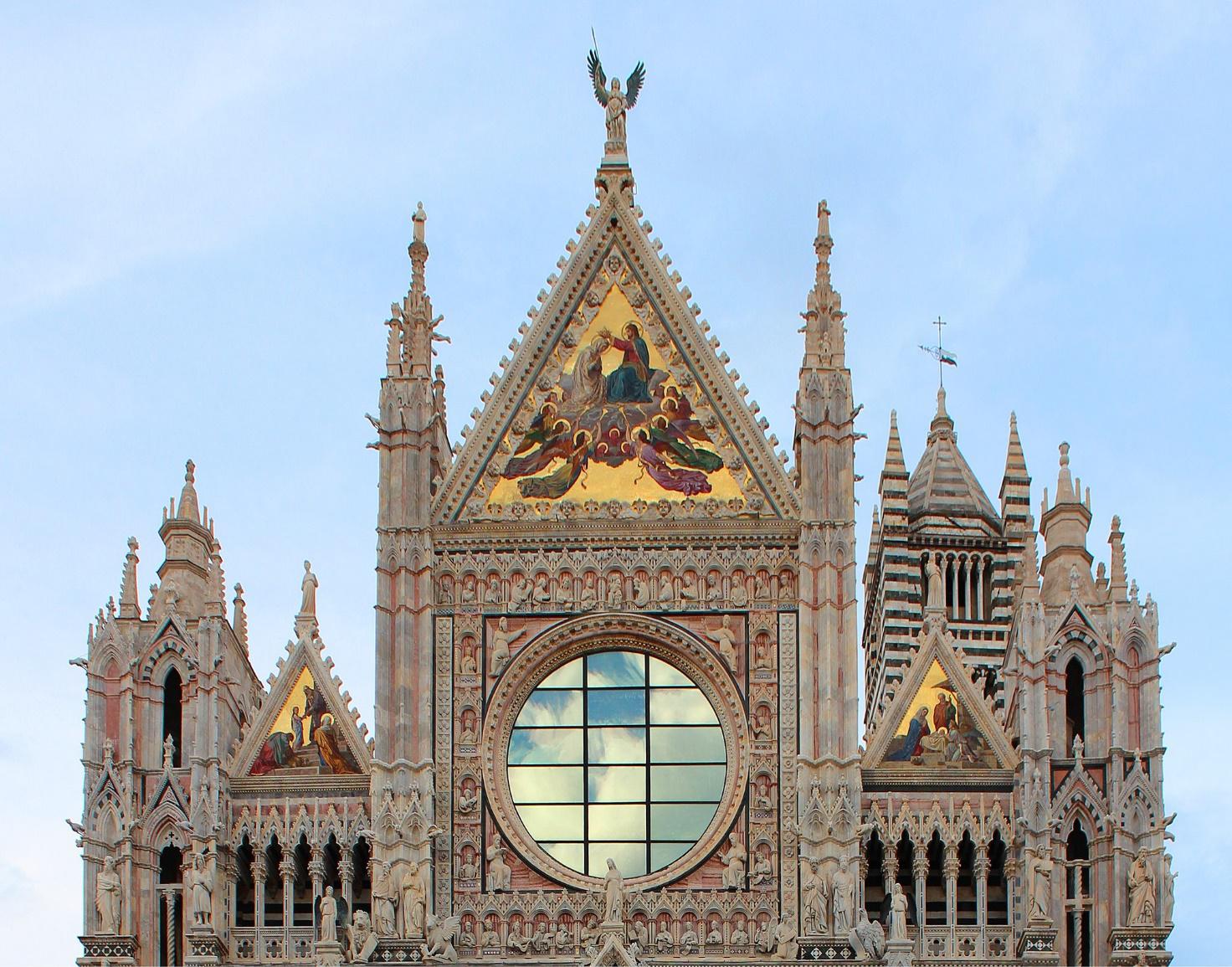
The upper part of the façade was designed by Camaino di Crescentino, between 1299 and 1317, who made three cusps, of which the central one houses a large oculus underneath it, where a stained-glass window is placed in which the Last Supper is reproduced, the work of Pastorino Pastorini, visible only inside. The beautiful mosaics, designed by Alessandro Franchi in 1878 and commissioned in Venice, feature the Presentation of Mary in the Temple and the Nativity of Jesus in the side cusps, while in the center is the crowning of the Virgin. The extraordinarily beautiful façade was to be a model for other Gothic cathedrals, including the coeval Cathedral of Orvieto, which was worked on by the Sienese architect Lorenzo Maitani, who was consulted in 1322 on the expansion of the Sienese cathedral.
The interior layout of the church is Latin cross, with aisles divided by rectangular bays. Above the presbytery rises the dome, completed in 1263, which rests on six irregular hexagonal pillars, while the lantern was designed in 1666 by Gian Lorenzo Bernini. In the first half of the 16th century there was a remodeling of the presbytery by Domenico Beccafumi, which led to the current arrangement of the Pulpit by Nicola Pisano. A masterpiece of architecture and sculpture, it was made between 1265 and 1268, and is therefore placed later than the one made by the sculptor for Pisa Cathedral, from which it draws strong inspiration in form and decoration. The base has an octagonal pulvinate architrave structure, on which rise columns resting on statues of stylobal lions, while one inside rests on seated figures, respectively allegories of grammar, rhetoric and dialectic, the three arts of speech , and arithmetic, geometry , music and astronomy, the arts of number, and finally philosophy. The reliefs made on the eight sides actually present seven scenes: the Visitation, the Annunciation, the Nativity, the Presentation in the Temple, the Flight into Egypt, the Crucifixion, and the Last Judgment; for the Judgment occupies two sides, with the figure of Christ the Judge in an intermediate position, between the Heaven andHell panels.
Inside the cathedral’s chapels are admirable sculptural works such as the statues of St. Jerome and Mary Magdalene, made between 1661 and 1663 by Gian Lorenzo Bernini for the Chigi Chapel, also known as the Madonna del voto, a name derived from the altarpiece attributed to Diotisalvi di Speme, with the Madonna and Child, or precisely, Madonna del voto. In the left transept, the chapel of St. Ansano houses the Funeral Monument of Cardinal Petroni, executed by Tino di Camaino, son of the architect who built the upper cathedral facade, in 1318. Four angelic caryatids support the sarcophagus above which is the burial chamber with the deceased, and above it a tabernacle contains statues of the Madonna, St. Peter and St. Paul.
One of the peculiarities that make the cathedral unique is the magnificent floor composed of fifty-six marble inlays made in commesso, decorated following the preparatory drawings of important Sienese artists, such as Domenico Beccafumi, and others, such as Bernardino di Betto, known as Pinturicchio. The decoration along the three naves is based on themes from pagan classical antiquity; in fact, the Sibyls and the She-wolf suckling twins, the symbol of the founding of the city, are represented, while in the transept and chancel the story of the Jewish people and the salvation brought by the Redeemer is told. Among the artists who helped make the cathedral so rich in treasures, the name of the Sienese Duccio di Buonisegna stands out because of the beauty of the works he created for the cathedral, the altarpiece with the Maestà, which was musealized in 1878, and the stained-glass window with Stories of the Virgin, originally placed in the apse and dated according to documents to 1287, which has been kept in the museum of the Metropolitan Opera since 2004. The stained glass window is an oculus in which a large cross is inscribed, determining four resulting triangles, where the four evangelists with their symbols are portrayed. The vertical arm of the cross, read from the base upward, depicts the Death of the Virgin, the Assumption, and the Coronation of the Assumed Virgin, while the remaining two panels place the four patron saints of Siena.
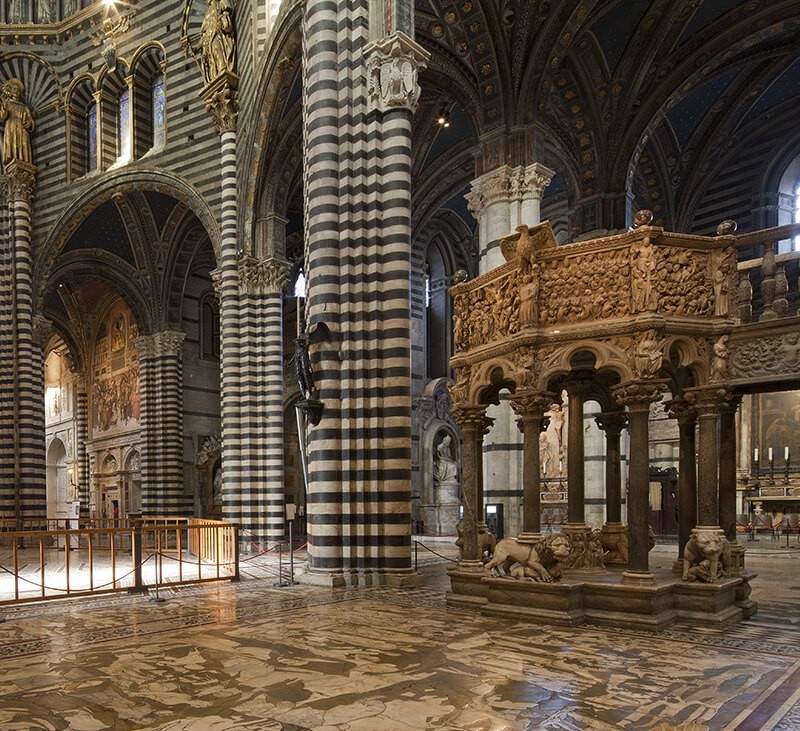
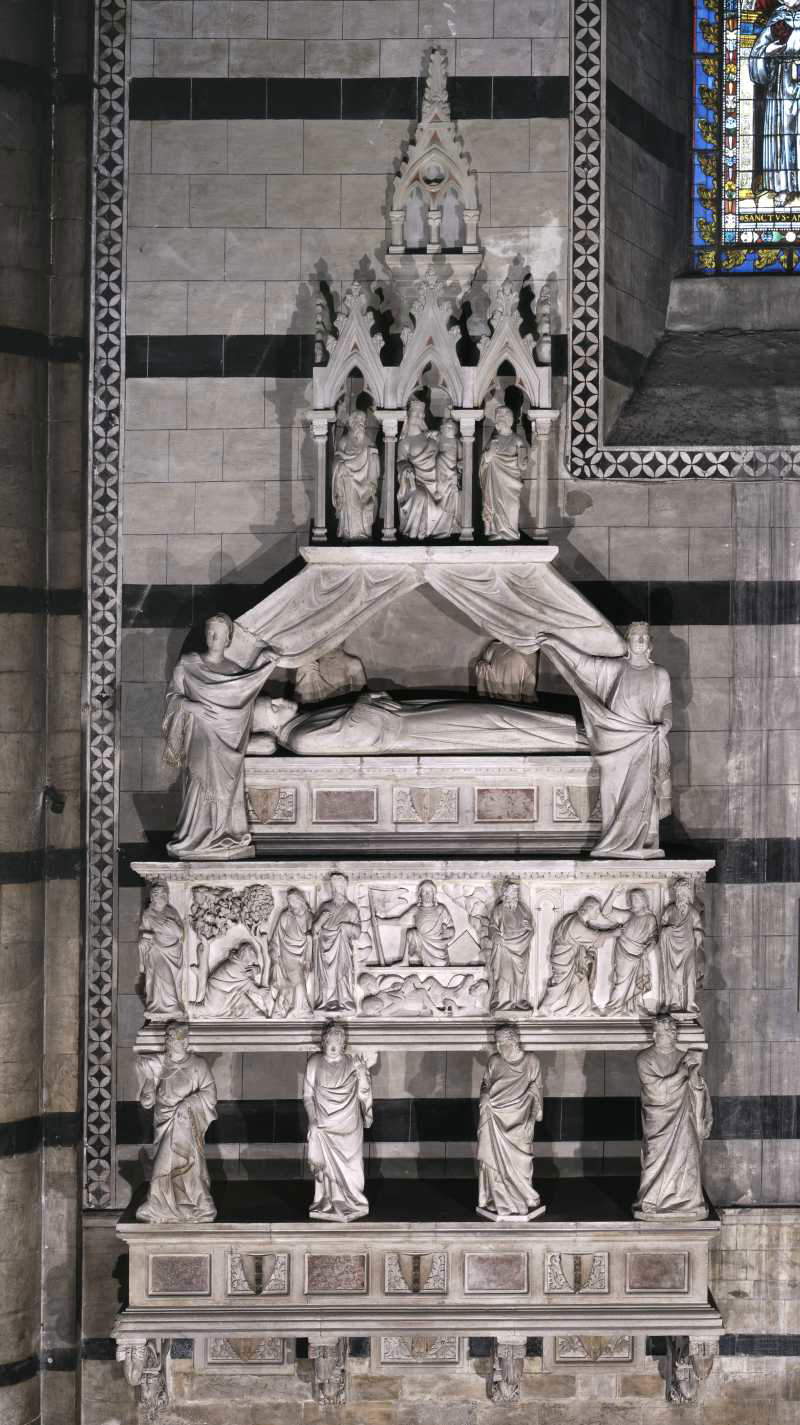
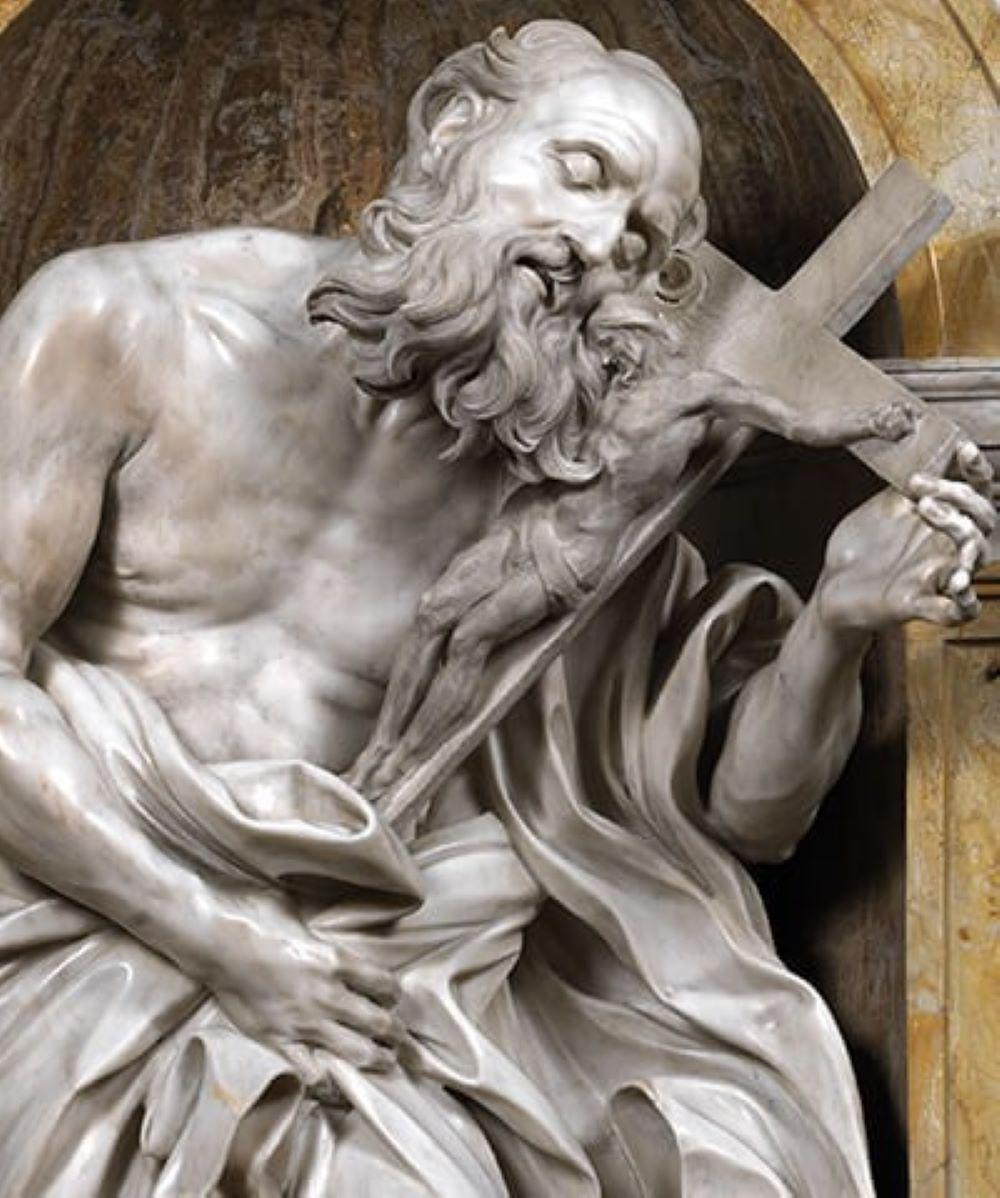
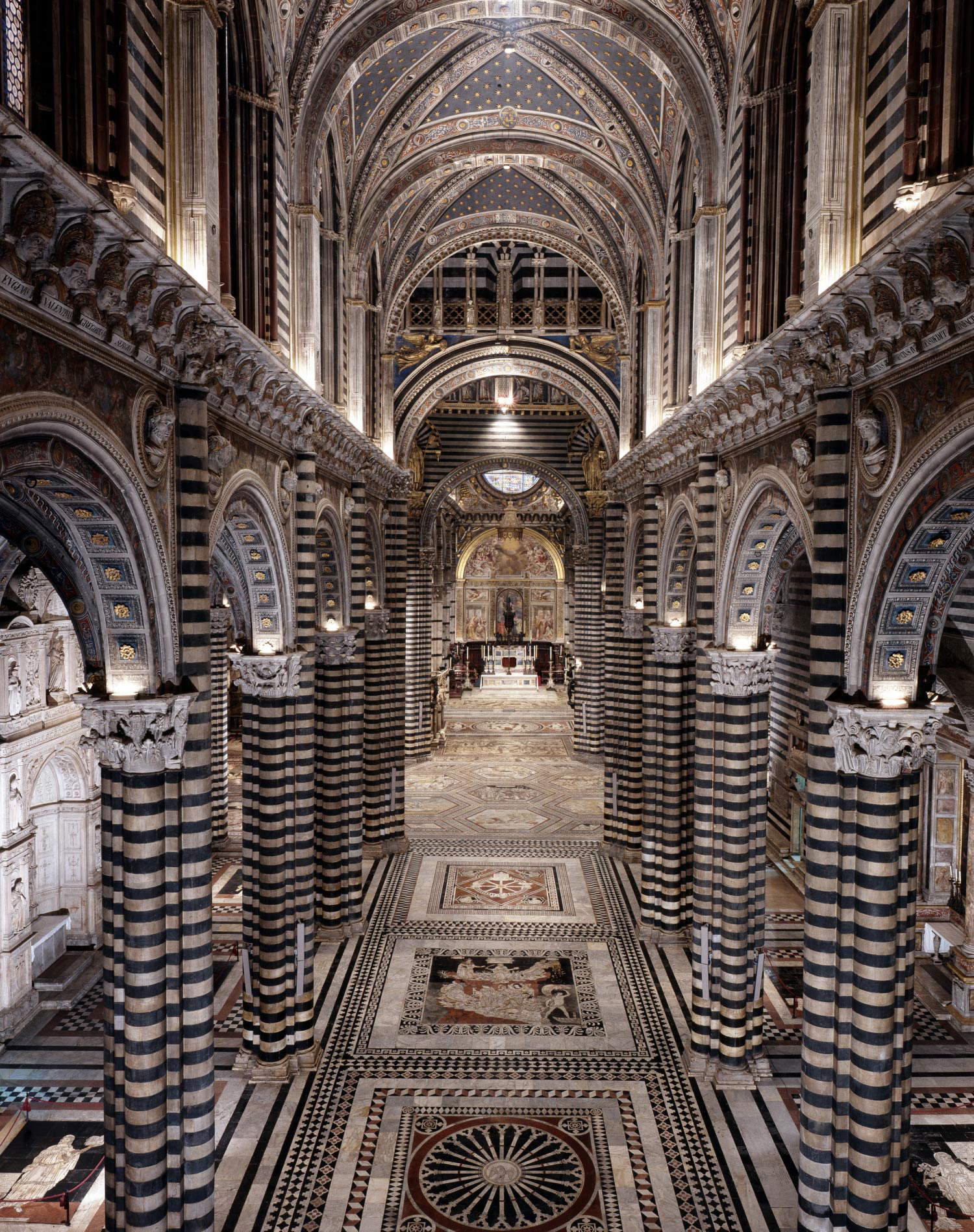
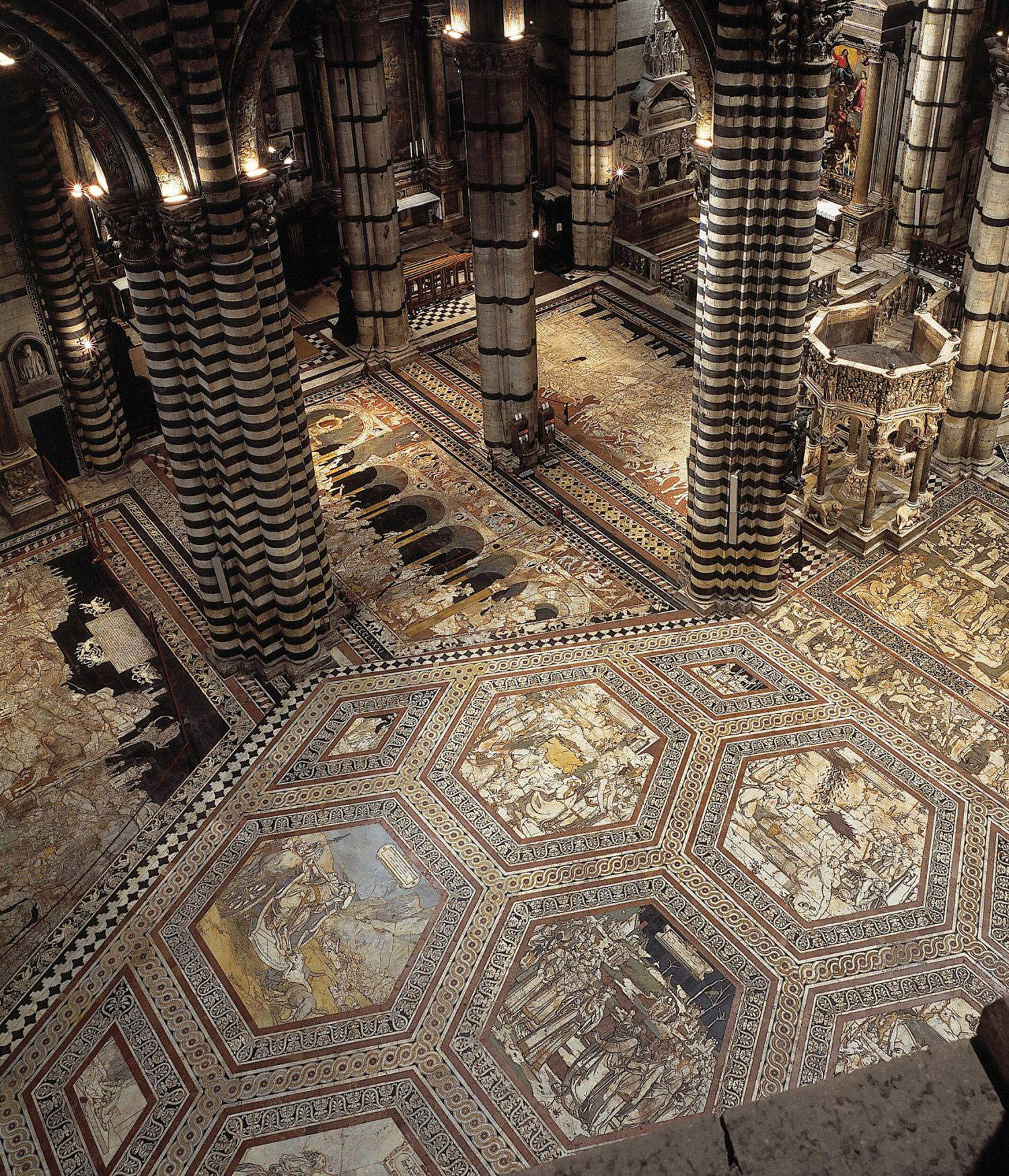
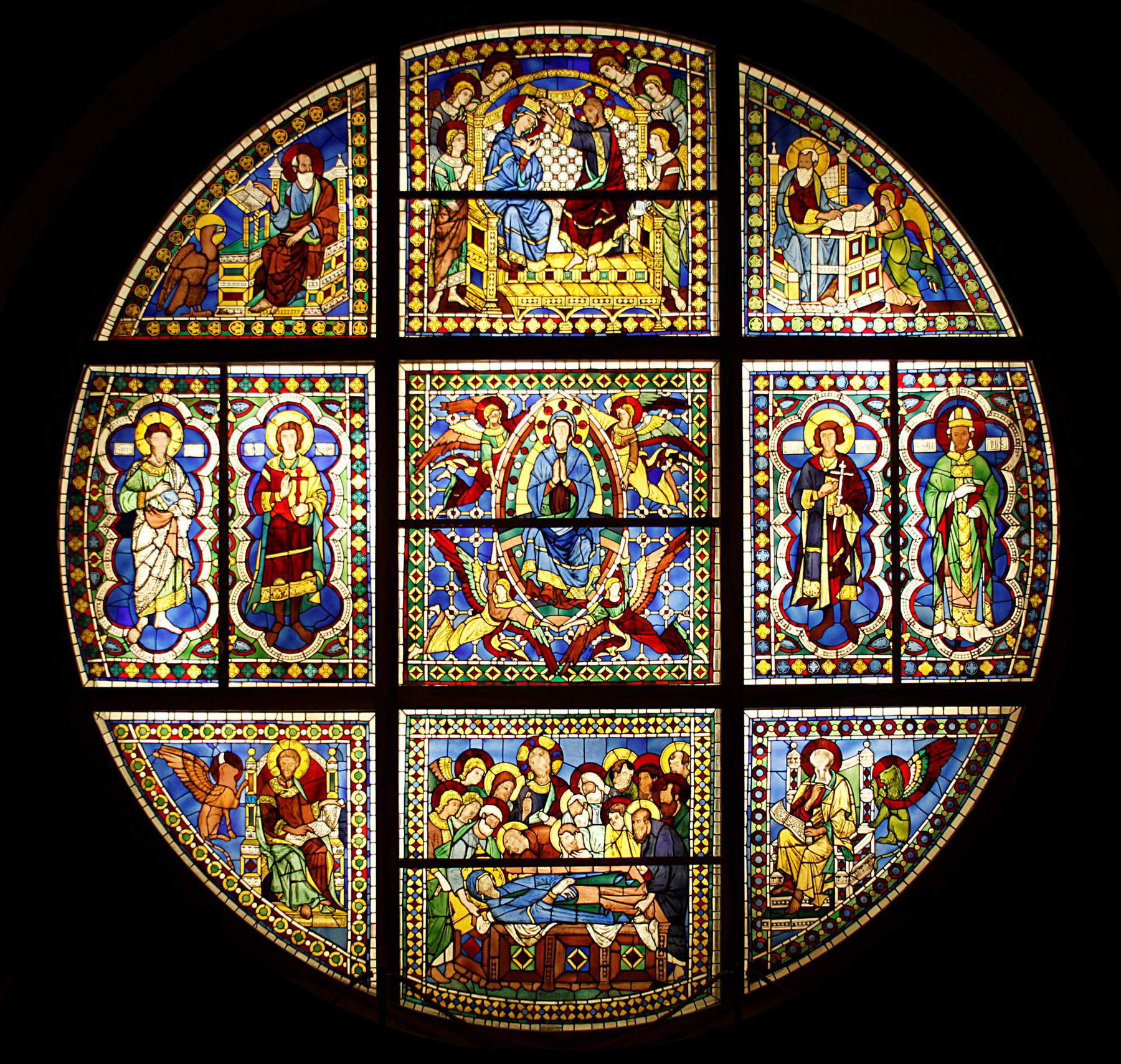
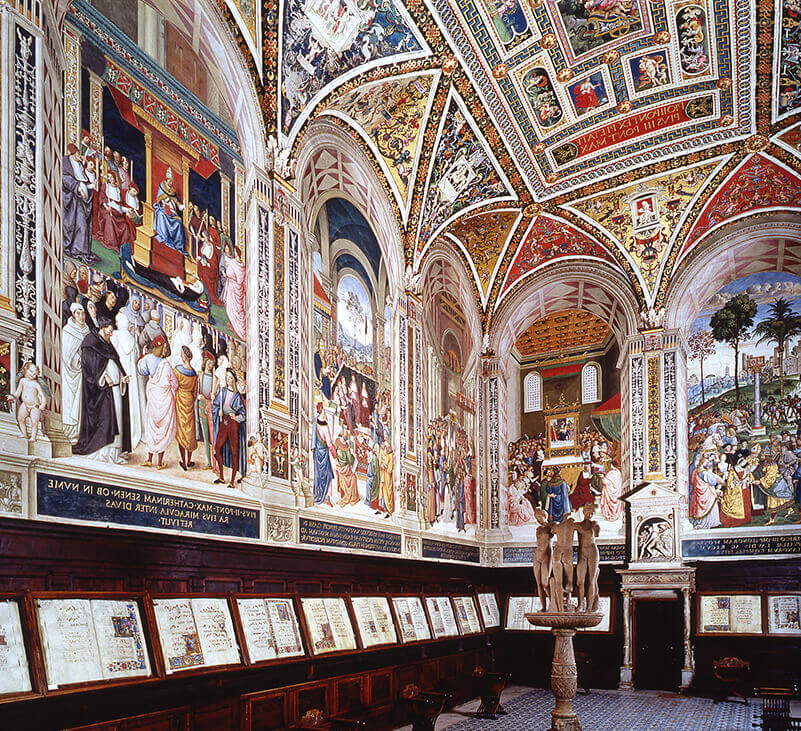
From the left aisle, one can access the Piccolomini Library, commissioned in 1492 by Cardinal Francesco Todeschini Piccolomini, archbishop of Siena and future Pope Pius III, to honor his uncle Enea Silvio Piccolomini, Pope Pius II, and to collect his book heritage, which, however, never left Rome. The decoration of the room intended for it was entrusted to Pinturicchio in 1502, who frescoed scenes from the life of Pope Pius II, probably with the collaboration also of a young Raphael Sanzio. The vault, decorated with grotesques, depicts two mythological episodes, Diana and Endyminius and the Rape of Proserpine, in the center of which is effigyed the coat of arms of Cardinal Piccolomini.
The cathedral can be reached by train; the station is about a 15-minute walk, a stretch that can be covered by bus in about 5 min. It is not possible to reach it by car, as it is located in the historic center of the city, so it is recommended to exit at Siena Ovest and reach the Duomo parking lot, or exit at Siena Sud and reach the Il Campo parking lot. For information on the schedule and cost of tickets, you can visit the website directly.
Warning: the translation into English of the original Italian article was created using automatic tools. We undertake to review all articles, but we do not guarantee the total absence of inaccuracies in the translation due to the program. You can find the original by clicking on the ITA button. If you find any mistake,please contact us.



























